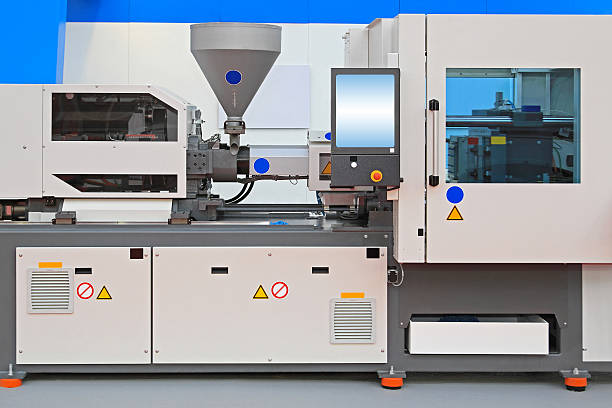
Injection Molding is the most widely used manufacturing technology for producing plastic items. Injection Molding is used to make a vast range of goods that vary widely in size, intricacy, and application. The Injection Molding process necessitates the use of an Injection Molding machine, raw plastic material, and a mold. The plastic is heated and injected into the mold in the Injection Molding machine.
Components of Injection Molding
An Injection Molding machine is made up of the following components in detail.
And here is how each component of an Injection Molding machine works.
· Hopper
Here we enter the plastic material ingredients for the molding procedure.
· Archimedean Screw
It propels the constituents of plastic material ahead.
· Heaters
It is used to raise the temperature of the system in order to produce the product in a good final state. The heater operates by melting the constituents of plastic polymers.
· Nozzle:
The material temperature rises to the point where it quickly enters the mold cavity.
· Extraction Pin
It operates similarly to split molds in that the shape created is removed and a further procedure is carried out.
Split Mold or Cooling Channels: Product cooling done in the system.
· Clamping unit
It is used to secure the tool.
· Injection unit
It may be used to inject the mold in the injection unit.
· Drive unit
The driving unit is utilized to force the mold into the cavity.
· Hydraulic system
Ramping the mold with the press.
Different kinds of Injection Molding
Here are Different kinds of Injection Molding
1. Injection Molding of metal
2. Casting by die
3. Liquid silicone rubber Injection Molding
4. Injection Molding with thin walls
5. Injection Molding as a reaction
Ø Injection Molding of metal
In this method, metal powder is combined with polymer binder material powder to create feedstock.The feedstock is then used in Injection Molding to create the appropriate form cavity. The feedstock is pumped into the cavity, and the “green” mold metal portion is produced. Generally, the cavity is larger than the actual intended shape since the mold metal may shrink after cooling, which is why we provide additional room.
Following this procedure, the polymer binding particles must be separated from the metal component; for this purpose, the green metal portion may be dissolved in chemical composition or heated. The final procedure, sintering, is then completed. The metal portion is heated in a chamber during this procedure, which minimizes its free space.
Ø Casting by die
We can obtain excellent dimensional precision and a very nice surface polish with this method. We push the molten metal into the dies to get the required form in this procedure. Die casting is accomplished in two ways:
· Hot chamber for die casting
· Cold chambered die casting
Ø Liquid silicone rubber Injection Molding
We can create long-lasting material pieces using this method.
Ø Injection Molding with thin walls
This sort of molding procedure may be used in situations when we need to make plastic thin components at a lower cost than any other molding process. This form of molding is used in the food packaging, medical, and computer hose manufacturing sectors, among others.
Ø Injection Molding as a reaction
Two types of material are blended under high pressure in an impinging mixer before being injected into the mold under low pressure.
Merits of the Induction Molding Process:
The following are the benefits of an Injection Molding process:
· Rapid output.
· Wages for labor are low.
· The product is mass-produced.
· Many particles (material) are used at the same time.
· The little product element is simple to produce.
· Produces relatively little waste throughout the manufacturing process.
· Capability to make a hole in a product.
· Color can be readily adjusted throughout manufacture.
· Finishing is only needed in a little amount.
· Dimension is an excellent choice.
Demerits of Induction Molding Process
The following are the demerits of the Injection Molding process:
· Initial tooling and machinery costs are high.
· Molds are also highly expensive.
· Before any procedure can begin, the designs must be made.
· This might cause manufacturing to go behind schedule or cost the firm additional money.
Conclusion
Injection Molding is increasingly crucial in producing special-purpose items with higher dimensional precision. So we hope you all learned about the Injection Molding, as well as its parts, kinds, benefits, and drawbacks.
